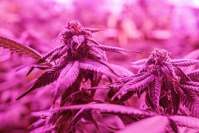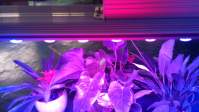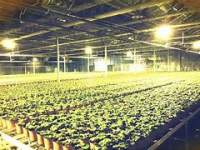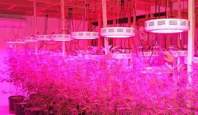LED plant lights explain why watermelon is so sweet
As we all know, the watermelon in Xinjiang is exceptionally sweet, and when compared with watermelons in other places, this sweetness is particularly obvious. Why is this? Some people say that the watermelon varieties are different, some people say that the lighting environment is different, and some people say that the temperature difference between day and night is large. Why Xinjiang’s watermelons are exceptionally sweet? Yaorong Technology was also puzzled at the beginning. Is it because the varieties are different, is it because the lighting environment is different, or is it because of the large temperature difference between day and night? Yaorong Technology has conducted a large number of experiments on this. The results of the experiment proved that even if the watermelon varieties are the same and the lighting environment is the same, the watermelons in Xinjiang are still sweeter. Finally, Yaorong Technology simulated the temperature difference between day and night in Xinjiang. This time I was surprised to find that in the daytime, the watermelon of the same variety under the same lighting environment, the watermelon growth of the two groups of laboratories are exactly the same, but at night, the temperature In the sudden drop of the laboratory, the watermelon grew slowly.
Chlorophyll
Chlorophyll is one of the most important pigments related to photosynthesis. It exists in all organisms capable of building photosynthesis, including green plants and prokaryotic blue-green algae (cyanobacteria) and eukaryotic algae. Chlorophyll absorbs energy from light, and then the energy is used to convert carbon dioxide into carbohydrates. Chlorophyll a mainly absorbs red light, and chlorophyll b mainly absorbs blue-violet light, mainly to distinguish shade plants from sun plants. The ratio of chlorophyll b to chlorophyll a of shade plants is very small, so shade plants can strongly use blue light and are adapted to grow in shade. Chlorophyll a is blue-green, and chlorophyll b is yellow-green. There are two strong absorptions of chlorophyll a and chlorophyll b, one in the red region with a wavelength of 630~680 nm, and the other in the blue-violet region with a wavelength of 400~460 nm.
Carotenoids
Carotenoids (carotenoids) are a general term for a class of important natural pigments, which are commonly found in yellow, orange-red or red pigments in animals, higher plants, fungi, and algae. So far, more than 600 natural carotenoids have been discovered. The light absorption range of carotenoids is OD303~505 nm. It provides the color of food and affects the human body's intake of food; in algae, plants and microorganisms, its color is covered by chlorophyll and cannot be presented. In plant cells, the carotenoids produced not only absorb and transfer energy to help photosynthesis, but also protect the cells from being destroyed by excited single-electron bond oxygen molecules.
The spectrum required for plant growth should be a continuous spectrum with a certain distribution width. It is obviously inappropriate to use a light source made of red and blue chips with a very narrow spectrum (as shown in Figure 3(a)). In experiments, it was found that plants tend to be yellowish, the leaf stems are very light, and the leaf stems are very thin. The spectrum required for plant growth should be a continuous spectrum with a certain distribution width. It is obviously inappropriate to use a light source made of red and blue chips with a very narrow spectrum (as shown in Figure 3(a)). In experiments, it was found that plants tend to be yellowish, the leaf stems are very light, and the leaf stems are very thin.
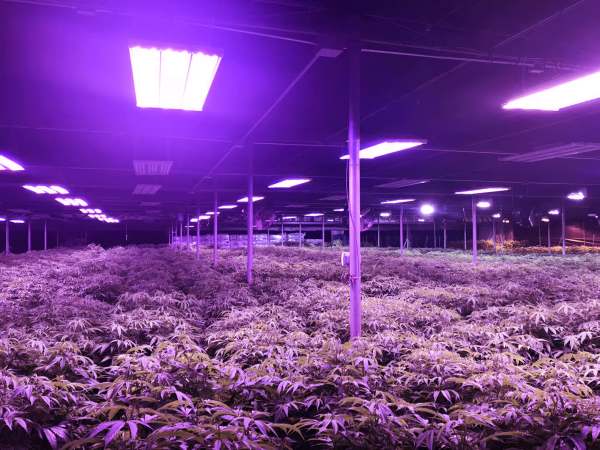
Visible light blue-violet light and cyan light have a great effect on plant growth and the formation of young buds. This kind of light energy has always been the elongation of plants to form a short and thick form; at the same time, blue-violet light also dominates cell differentiation especially The most important light; blue-violet light can still affect the phototropism of plants. Ultraviolet rays inhibit the formation of certain growth hormones in plants, thereby inhibiting the elongation of stems. Ultraviolet rays can also cause phototropic sensitivity, and it can be the same as blue, purple and cyan in visible light Promote the formation of anthocyanins. Both the red light in visible light and the infrared light in invisible light can promote the germination of seeds or spores and the elongation of stems. The red light in the led plant light can also promote the decomposition of carbon dioxide and the formation of chlorophyll.
The effect of the spectrum of led plant growth lights on the photosynthesis of plants The light that has a greater impact on plants is mainly divided into three categories. Ultraviolet rays and visible light and infrared rays. Let's analyze these three types of light in detail below.
The first band of radiant light: it is ultraviolet light that contains a lot of energy, but part of the ultraviolet light is absorbed by the ozone layer. Therefore, what we are more concerned about should be the parts closely related to the agricultural film: ultraviolet-b (wavelength is between 280-320nm) and ultraviolet-a (wavelength is between 320-380nm), these two wavelengths of ultraviolet light have their differences. The same effect is: coloring the flowers of plants.
The second band of radiant light: it is visible light (wavelength is 400-700nm), equivalent to blue light, green and yellow light and red light, also known as PAR, which is the active area of photosynthesis. It is the most important part of visible light used by plants for photosynthesis. Blue light and red light are the most important parts in the PAR band, because riboflavin in plants can effectively absorb this part of light, while green light is not easily absorbed.
The third band of radiation: infrared, which can be divided into near-infrared and far-infrared. Near-infrared light (wavelength is 780-3,000nm) basically has no effect on plants, it only produces heat. The wavelength of far-infrared rays is 3000-50,000nm, and this part of the radiation does not come directly from sunlight. It is a kind of radiation generated by molecules with thermal energy, which is easily lost at night.
Plants are most sensitive to red light spectrum, not very sensitive to green light, and the most sensitive area of the spectrum is 400~700nm. This section of the spectrum is usually called the region of effective energy for photosynthesis. About 45% of the energy of sunlight lies in this section of the spectrum. Therefore, if artificial light sources are used to supplement the amount of light, the spectral distribution of the light sources should also be close to this range. When we know the distribution of the effect of spectral wavelength on photosynthesis, we can get an accurate indicator of photosynthetically active radiation (PAR) through a spectral radiometer. The led plant growth light source can already be configured as an efficient plant light source according to the effective spectrum of photosynthesis. The led plant growth light must require sunlight according to the law of plant growth, and the led plant growth light uses the principle of sunlight. The light of the plant growth lamp replaces the sunlight to provide a better growth environment for plants.
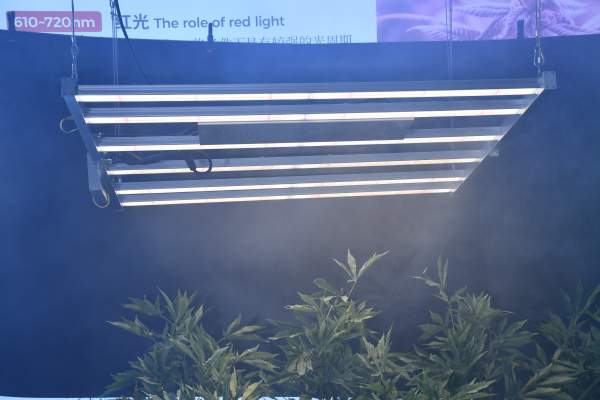
According to research, plants dominate photosynthesis when there is light during the day, and respiration dominates at night when there is no light. Plant photosynthesis is based on carbon dioxide and water as raw materials, which are converted into organic matter and released oxygen in a light environment; while the role of respiration is just the opposite of consuming organic matter, converting it into energy for plant growth, and releasing carbon dioxide. In the laboratory where the temperature drops sharply, the watermelon grows slowly, indicating that the plant’s respiration is very weak, consumes very little organic matter, and converts little energy into watermelon growth. This also causes the watermelon to accumulate more organic matter. This is why Xinjiang The reason why the watermelon is sweeter.
According to the results of the experiment, we can simulate the environment of Xinjiang in the greenhouse, add refrigeration equipment at night to adjust the temperature, and use Yaorong Technology LED plant lights to simulate the lighting environment during the day, so that no matter where it is, I can grow a watermelon as sweet as Xinjiang.


